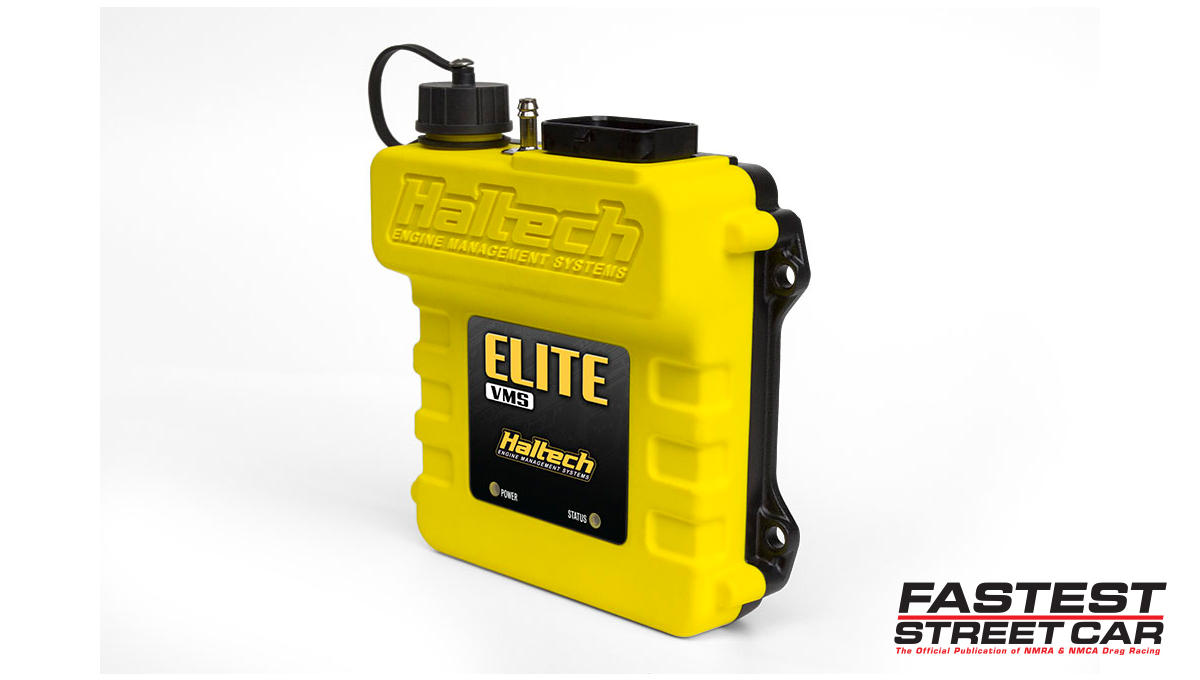Written by Phillip Thomas
Photography courtesy of Haltech
When you're looking at big-power mechanical injection or carburetion, it sometimes feels like being a boulder sitting on the banks of a river as the march of technology flows around you. While we've seen a rapid growth of EFI products and their capabilities, management systems that are tailored for mechanical injection and carburetion have largely remained the same old stalwarts they've always been.
One of the main temptations of EFI is the promise of an all-in-one package, right It's not just the electrically actuated fuel distribution, but the ease of tuning adjustments; the breadth of features and controls; and reams of scrutinizable data gave racers tools that they had never found before with the latest silicone hardware backing everything. Of course, those outside of the EFI club were clever enough, with a handful buying traditional EFI ECUs and just turning off anything related to injector control.
Haltech caught some of those buyers when its engineers began scribbling down the details for the company's new Elite VMS series. It's basically everything that's in our other ECUs, minus the fuel injection outputs, Eric Gash, General Manager at Haltech Engine Management Systems, explained.
Designed and built in Australia, this system is a distilled vehicle management system that brings the technology-rich features of modern EFI to those who need everything but fuel control. Based on the architecture of their Elite series of ECUs, the VMS and VMS-T offer all the tools that an ECU gives you without the additional hardware (and thus, cost) needed to drive a fuel system.
Swiss-Army Speed
The all-in-one nature of the VMS lends to one quick advantage, and that is packaging size. Displacing a volume approxiamating a grilled cheese sandwich, it manages to reduce the venerable web of modules and components that many racers traditionally deploy into a single box. Just to rattle off a few things that you can manage with a VMS: six stages of nitrous; per-cylinder timing control; a transbrake; turn signals; coil-on-plug ignition (up to eight cylinders); boost control (including support for CO2 regulated dome pressure, naturally); cooling fans and pumps and just about anything else you can dream up for its I/O pins.
This problem-solving yellow brick paves the way to a succinct, tidy, and robust engine management package, pulling back the curtain on EFI's true secret weapon all these years. Being able to integrate these multitude of systems into a single unit means that not only is tuning that much easier as every variable is tweaked from the same window, but everything works in unison on one platform without a mix of hard-wired modules effectively playing the telephone game with your engine's vital signs.
There are only two basic options when ordering: The VMS and VMS-T. The T is for torque management. Both offer the same basic features, but the VMS-T adds an additional 20 channels (40 total) of datalogging to handle the additional responsibilities of torque management, though there's a price difference between the two kits. The VMS can fire practically any Pro Mag, distributor, or individual-coil ignition system. The latter is a massive upgrade for forced-induction packages that require careful timing control to keep their powerplants out of meltdown, as it eliminates the chances of the spark jumping out of phase as the rotor stretches to the outer limits of travel for aggressive timing changes.
The biggest benefit for those guys is the ability to run individual coils. The problem that you run into with a nitrous car on a distributor is that you have to pull so much timing out of it. You're starting with a base timing and then you're pulling X number of degrees of timing out of it when you're turning on multiple kits. If you take that and then you add onto it timing retard for a power management system like our torque management, you're again pulling timing out of it, Gash said. You can pull enough timing to get the distributor out of phase and it misfires on the wrong cylinder and blows the hood scoop not a problem with individual coils.
Outside of timing control there's nine additional outputs with pulse width modulation across both 12- and 5-volt components. On the input side, there's options for the usual digital and analogue signals along with a built-in three-bar MAP sensor.
Data and Diagnostics
The real hat trick is having an all-in-one toolset for tuning and datalogging. While everyone thinks horsepower wins races, it's really calibrating the driver and machine together that brings home win lights and paychecks. With 20 channels of datalogging in the VMS, and 40 channels in the aforementioned VMS-T, you can track practically every detail about the run.
This has the obvious advantage in tuning, but the secondary advantage is in trouble-shooting. Somewhere around every .005 of a second, the VMS samples its array of sensors and writes them down into the onboard storage as a datalog file that can be read by Haltech's datalog Viewer software. Being able to record solenoid voltages, for instance, can help you quickly pinpoint a failing nitrous solenoid before it does something destructive.
If you think you're having an issue with a sensor wire, you don't have to take a voltmeter out of your toolbox and measure the sensor, said NMCA racer Eric Kenward. The Haltech software will tell you exactly what color the wire is and exactly voltage is on that wire. So you can tell if you have a bad sensor or if you have a bad harness wire.
You can only win the races that you start, and every second counts between rounds if an issue boils to the top.
So, as you can see, you don't need to have fuel injection to add a robust suite of vehicle controls with the Haltech VMS.
Sourece
Haltech Engine Management Systems www.Haltech.com



